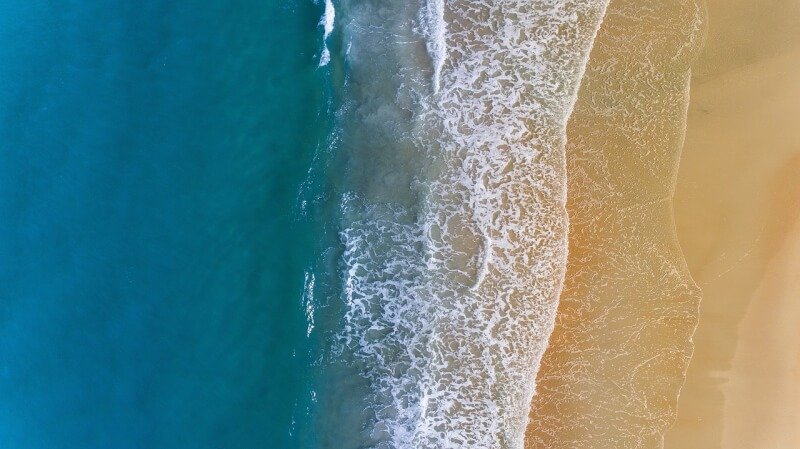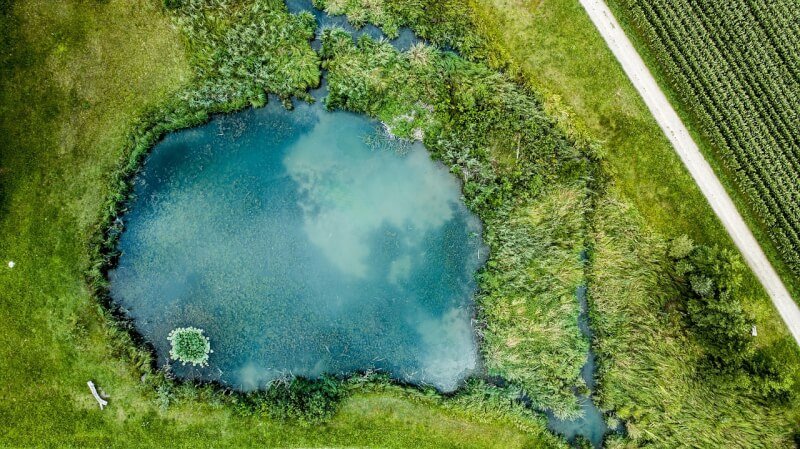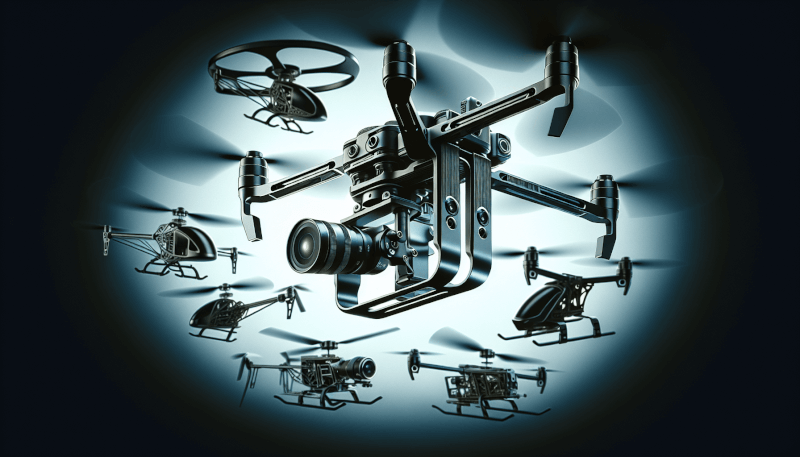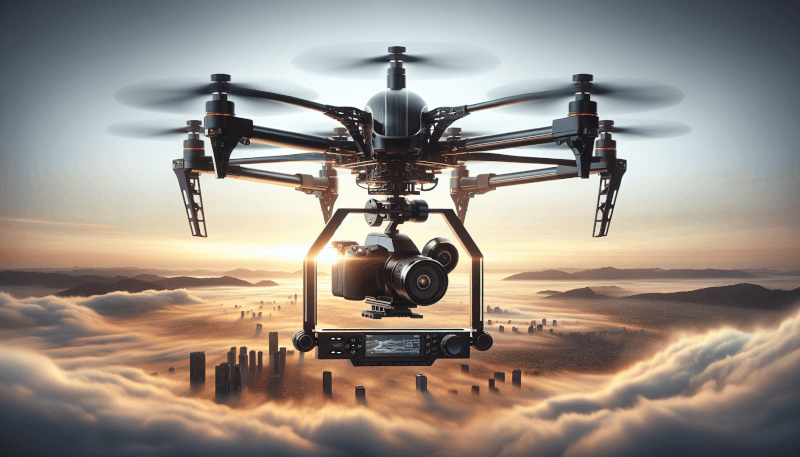Are you looking to elevate your aerial photography game? Look no further! In this article, we will introduce you to the top 5 RC helicopter camera mounts that will take your photography skills to new heights. With these innovative and reliable mounts, you’ll be able to capture breathtaking shots and videos from the sky. Whether you’re a professional photographer or simply a hobbyist, these camera mounts will enhance your photography experience and allow you to capture those stunning aerial moments with ease. Read on to discover the best options out there!
Tarot T-2D V2 Brushless Camera Mount
The Tarot T-2D V2 Brushless Camera Mount is a versatile option that is compatible with a wide range of RC helicopters. This camera mount offers 3-axis stabilization, which is crucial for capturing smooth and steady footage during aerial photography sessions. The brushless motors in this mount provide precise control, allowing you to accurately adjust the camera’s position and angle. Additionally, this camera mount supports GoPro cameras and other similar-sized action cameras, making it a great choice for photographers who already own these devices.
DJI Zenmuse H4-3D 3-axis Gimbal
The DJI Zenmuse H4-3D 3-axis Gimbal is specifically designed for DJI Phantom series RC helicopters, ensuring a seamless integration with these aircraft. This camera mount features highly advanced stabilization technology, which helps to eliminate vibrations and maintain a steady camera position, even when flying in turbulent conditions. The Zenmuse H4-3D allows for full control over camera tilt and pan, giving you the freedom to capture your subject from various angles. Furthermore, this gimbal supports GoPro Hero4 cameras, providing high-quality footage for your aerial photography endeavors.

FeiyuTech FY-G3 Ultra 3-axis Gimbal
For photographers seeking a lightweight and compact camera mount, the FeiyuTech FY-G3 Ultra 3-axis Gimbal is an excellent option. This gimbal is compatible with various RC helicopters, allowing you to use it with multiple aircraft models. The FY-G3 Ultra supports GoPro Hero3 and Hero4 cameras, ensuring compatibility with popular camera models. This gimbal offers both auto and manual stabilization modes, giving you the flexibility to choose the mode that best suits your photography needs. Whether you prefer the convenience of auto stabilization or the precision of manual control, the FY-G3 Ultra has you covered.
Walkera G-2D 2-axis Brushless Camera Gimbal
If you’re in search of a simple yet reliable camera gimbal, the Walkera G-2D 2-axis Brushless Camera Gimbal is a great choice. This gimbal is suitable for Walkera QR X350 and other similar RC helicopters, offering a straightforward installation and setup process. With 2-axis stabilization, this camera gimbal provides basic stabilization for your aerial photography needs. The Walkera G-2D supports GoPro Hero3 and Hero4 cameras, allowing you to capture high-quality footage with ease. Whether you’re a beginner looking to dip your toes into aerial photography or a seasoned photographer in need of a backup gimbal, the G-2D is a reliable option.

Hobbypower Z1-Proud 3-axis Camera Gimbal
For professional-level aerial photography, the Hobbypower Z1-Proud 3-axis Camera Gimbal is an exceptional choice. This gimbal offers 3-axis stabilization, ensuring steady footage and impeccable image quality. Compatible with various RC helicopters, the Z1-Proud provides flexibility in terms of aircraft selection. With support for GoPro Hero4 cameras, this gimbal allows you to capture stunning visuals with ease. Additionally, the Z1-Proud includes a wireless remote control, making it effortless to operate while in flight. If you’re looking for a camera gimbal that offers top-notch stabilization and advanced features, the Z1-Proud is a great option to consider.
Factors to Consider When Choosing an RC Helicopter Camera Mount
When choosing an RC helicopter camera mount for aerial photography, there are several crucial factors to consider:
Compatibility with your RC helicopter model
First and foremost, it’s essential to ensure that the camera mount is compatible with your specific RC helicopter model. Different mounts are designed to fit certain aircraft, and using an incompatible mount may result in functionality or stability issues.
Stabilization technology
The type of stabilization technology offered by the camera mount is also important to consider. 3-axis stabilization is the gold standard for smooth and steady footage, but some mounts offer 2-axis stabilization, which may be sufficient for basic photography needs.
Camera compatibility
Make sure the camera mount supports your camera model. Many mounts are designed to accommodate GoPro cameras, but it’s crucial to check if they are compatible with the specific model you own, such as a GoPro Hero4.
Ease of installation and setup
Consider the ease of installation and setup when choosing a camera mount. Some mounts may require complex installations or configuration processes, while others offer a simple and straightforward setup. Depending on your level of expertise, you may prefer a mount that is easy to install and get up and running quickly.
Weight and size
The weight and size of the camera mount are important considerations, as they can affect the overall flight performance of your RC helicopter. It’s crucial to ensure that the camera mount is not too heavy for your aircraft and that it does not impede its maneuverability.
Control options
Consider the control options available with the camera mount. Some mounts offer more advanced control features, such as wireless remote control or the ability to adjust camera tilt and pan angles. Depending on your photography needs and preferences, you may find certain control options more desirable.

The Importance of Stabilization in Aerial Photography
Stabilization is a crucial aspect of aerial photography, as it directly impacts the quality of footage and images captured. Here are some reasons why stabilization is essential:
Reducing camera shake and vibrations
When operating an RC helicopter for aerial photography, various factors can cause the camera to shake or vibrate. Wind, turbulence, and sudden movements of the aircraft can all affect the stability of the camera. Stabilization technology helps counteract these factors, reducing camera shake and resulting in smoother footage.
Producing smooth and professional-looking footage
Unstable footage can be disorienting and difficult to watch. Stabilization technology ensures that your footage is smooth and steady, enhancing the overall viewing experience. Smooth footage also adds a professional touch to your aerial photography projects and highlights your skills as a photographer.
Enhancing the overall quality of aerial photographs
Sharp and clear images are essential in aerial photography. By stabilizing the camera, you can capture photos without blur or motion artifacts, resulting in high-quality images. Stabilization helps to eliminate unintended movements, ensuring that your photographs are crisp and detailed.
Best Practices for Using RC Helicopter Camera Mounts
To maximize the effectiveness of your RC helicopter camera mount and achieve the best possible results, follow these best practices:
Performing pre-flight checks
Before each flight, thoroughly inspect your RC helicopter and camera mount. Check for any loose connections or components that may affect the stability of the camera. Additionally, ensure that the camera mount is properly balanced to prevent any unwanted vibrations during flight.
Ensuring proper balance of the camera mount
Properly balancing the camera mount is crucial for achieving smooth and steady footage. Take the time to adjust the camera mount’s position and weight distribution until it is well-balanced. This will help prevent unnecessary strain on the motor and ensure optimal stabilization.
Using appropriate camera settings
Adjusting your camera settings is essential for achieving the desired results. Experiment with different settings, such as frame rates, exposure, and white balance, to capture the scene as accurately as possible. It’s also important to choose the appropriate resolution and aspect ratio for your specific project.
Choosing the right flying conditions
Selecting suitable flying conditions can significantly impact the quality of your aerial photography. Avoid windy and turbulent weather conditions, as they can cause the camera to shake and result in unstable footage. Opt for calm and clear weather whenever possible to achieve the best results.

Tips for Aerial Photography with RC Helicopter Camera Mounts
To enhance your aerial photography skills and capture stunning visuals with your RC helicopter camera mount, consider the following tips:
Capture from different angles and perspectives
One of the benefits of aerial photography is the ability to capture unique angles and perspectives. Experiment with different camera angles, heights, and distances to add variety to your shots. This will help create a more visually engaging final product and highlight the beauty and intricacies of your subjects.
Utilize camera panning and tilting
Take advantage of the camera mount’s capabilities to pan and tilt the camera. This allows you to track moving subjects or create smooth transitions between different areas of interest. Practicing controlled panning and tilting movements will enable you to capture dynamic footage and add a cinematic feel to your aerial photography.
Experiment with exposure settings
Aerial photography often presents unique lighting challenges. Experiment with exposure settings to achieve the desired level of brightness and contrast in your photos and videos. Adjusting the exposure compensation, ISO, and aperture can help you capture the scene accurately, even in challenging lighting conditions.
Consider post-processing techniques
Post-processing techniques can further enhance the visual quality of your aerial photography. Once you have captured your footage or images, explore editing software to fine-tune the colors, contrast, and sharpness. Additionally, consider adding creative effects or filters to add a personal touch to your work.
Conclusion
In conclusion, choosing the right RC helicopter camera mount is crucial for achieving excellent results in aerial photography. The Tarot T-2D V2, DJI Zenmuse H4-3D, FeiyuTech FY-G3 Ultra, Walkera G-2D, and Hobbypower Z1-Proud camera mounts are all excellent options to consider, each with its own unique features and benefits.
When selecting a camera mount, factors such as compatibility with your RC helicopter model, stabilization technology, camera compatibility, ease of installation and setup, weight and size, and control options should all be taken into account. By carefully considering these factors, you can find the perfect camera mount to suit your specific needs and achieve the best possible results in your aerial photography endeavors.
Remember to prioritize stabilization in your aerial photography efforts, as it plays a crucial role in reducing camera shake and vibrations, producing smooth and professional-looking footage, and enhancing the overall quality of your aerial photographs. By following best practices, such as performing pre-flight checks, ensuring proper balance, using appropriate camera settings, and choosing the right flying conditions, you can make the most of your RC helicopter camera mount and capture breathtaking visuals.
Lastly, don’t forget to experiment with different angles and perspectives, utilize camera panning and tilting, adjust exposure settings, and consider post-processing techniques to add creativity and flair to your aerial photography. With the right RC helicopter camera mount and these valuable tips, you’ll be well on your way to achieving outstanding aerial photography results.



